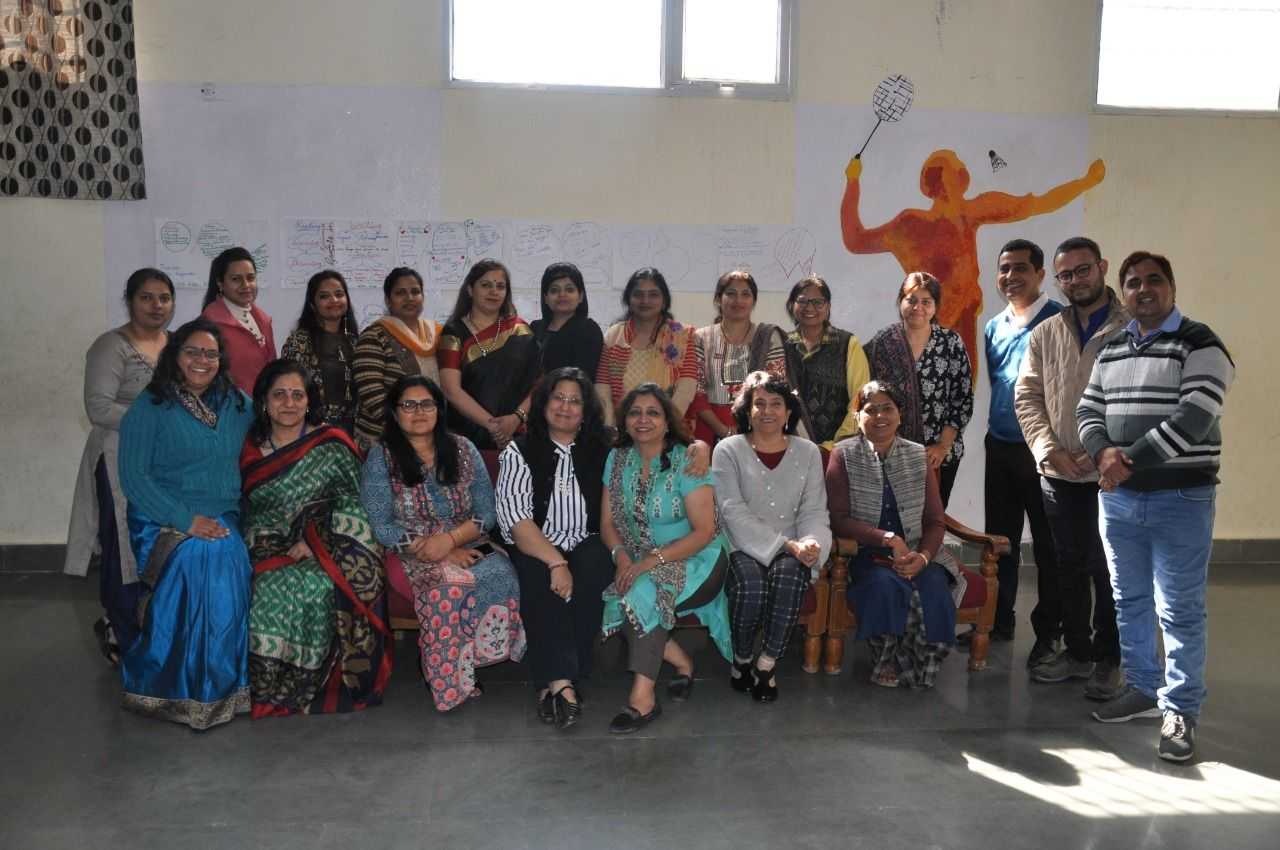CBSE English teachers workshop
A two-day Capacity Building Programme for teachers of English Core in class XII, was conducted by CBSE at Rishikul Vidyapeeth, Alipur, on 14 & 15 March, 2019. Ms. Navreet Shergill represented The Indian School at the event which saw the participation of 24 senior teachers of several schools from across the Delhi-NCR region. Ms. Ruchi Senger, resource person and writer of the CBSE teachers training module, engaged participants in a live demonstration of the role of innovative pedagogy in knowledge-based skills development.
The purpose of the capacity building programme was to fortify teachers with effective teaching methodologies needed for the millennial generation of students. The redundancy of the conventional method of teaching was highlighted and the gathering was encouraged to embrace innovative pedagogy to achieve the process of assessment as learning.
[gallery link="file" order="DESC"]
On the first day of the session, participants were given a copy of the Circular No. Acad-11/2019 dated March 6, 2019, by CBSE on strengthening assessment and examination practices wef 2019-20. The curriculum document would be made available to all schools by April 2019. A discussion ensued on the proposed changes in Internal Assessment and Year End/Board Examinations.
The relatively small but highly motivated group plunged into unravelling the complexities of classroom teaching by adopting strategies where knowledge and skills are exchanged in an educational context.
An interesting activity brought forth the differences in individual understanding. It required teachers to close their eyes and follow specific instructions to fold and tear a blank sheet of paper. It was amazing to see sheets folded and torn at different places. The message was subtle yet lucid. Each individual interprets things differently. Thus, there are varying levels of comprehension in the classroom.
Thereafter, attendees were given a set of questions on the reading comprehension section of the CBSE board question paper which assessed their awareness of the marking scheme and evaluation process. They were made aware that essential reading skills - decoding, fluency and vocabulary- can be used for comprehension, as well. The teachers were asked to solve a handout on reading comprehension. The techniques of skimming, scanning, chunking and inference were revisited.
Next, the focus shifted to the teaching of poetry with the help of the poem Aunt Jennifers Tigers from the NCERT textbook for class XII Flamingo. Poetry requires appreciation and not lecture. The resource person shared handouts on several inventive tools as effective learning aids for the students. These aimed at creating a visual impact through the use of figures of speech, sequences, themes and inference tasks.
The locus, thereafter, moved to advanced writing skills. A constructive and collaborative learning process by students was emphasized upon with teachers as facilitators. Also, the writing section should be process based, not product based. Towards this end, the teachers were asked to go through the model hand-outs on short and long writing tasks. The approach adopted was pan-Indian. All were encouraged to use different tools to make the process of teaching-learning fun and student-friendly. The use of mnemonic devices to remember the formats, difference between cohesion and cohesiveness, need for a word bank of transition verbs, STAR framework ( Skills & knowledge Thinking Application Relationships), TPR (Total Physical Response), and knowledge of assessment parameters for accurate evaluation were discussed in detail.
The following days session commenced with a lively recapitulation activity Hot or not. The participants were organized into two teams members took turns to sit on the hot seat with their back towards the blackboard. The resource person wrote skimming on the board. The remaining members gave verbal clues in short phrases and the member on the hot seat had to guess correctly. In this manner, the concepts learnt the previous day were reinforced in a fun environment.
The following activity Yes or No focused on the skill of constructing character sketches. A name of an actor was written on a post-it and placed on the players forehead. The said player didnt know the name written on the slip and so had to guess the same by asking questions like Silent Era? Male? Female? Main lead? Supporting actor? So on and so forth. The audience could only reply in monosyllabic yes or no! The teachers enjoyed this activity as they were able to guess the personalities based on the physical description, characteristics, chronology, etcetera.
Hereafter, the activities focused on the teaching of literature and constructing lesson plans using Blooms Taxonomy. There are six levels in the taxonomy -Knowledge, Understanding, Application, Analysis, Synthesis, and Evaluation. Thus, it is a powerful tool to help develop learning objectives because it explains the process of learning.
A group activity was undertaken to enhance lesson planning skills using the aforementioned parameters. The gathering was divided into smaller groups of four to five teachers. What followed was a collaborative effort as the teachers read handouts on various techniques of pre-reading, while reading and post reading. Each group was tasked to present a lesson plan on the fairy tale Cinderella. It was the most satisfying and successful effort as each teacher was able to bring her own unique touch to the assignment. The devices employed to liven-up the lesson were response generators, visual thinking, flipping the classroom, sequencing, mind-mapping, and etcetera.
The exciting adventure of learning came to an end with the wrap-up session wherein the teachers worked in pairs to create posters for the CBP Gallery. The posters covered the vast range of instructional strategies and pedagogical practices covered during the workshop. The posters were put up on the wall for all present to read, revise and reinforce.
The host school took good care of the visitors and served a lavish spread on both days. New associations were forged. The promise of a new beginning shone brightly as the empowered teachers returned to their respective schools with an arsenal of pedagogical innovations for inclusive classroom learning.













